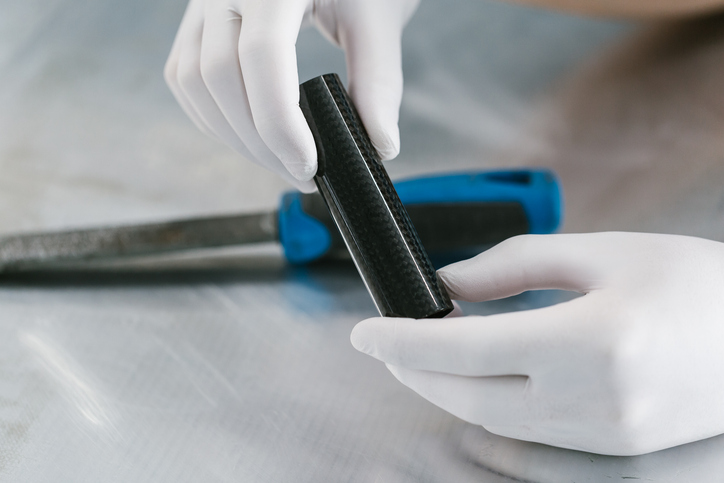Composite part manufacturing requires heat shrink tape in order to properly compress products. Heat shrink tape solutions can provide many benefits during manufacturing of composite parts, including removing voids, improving lamination, and providing a superior surface finish. Let’s explore the role of shrink tape in composite part manufacturing and the benefits of choosing solutions from Dunstone.
Applications of Shrink Tape in Composite Parts
With composite parts being used in critical applications, such as oil and gas, aerospace, automotive, and more, it is important to ensure that they are properly manufactured. One of the best ways to do so is by using heat shrink tape.
Composites provide many advantages, including:
- High strength-to-weight ratio
- High specific stiffness
- Fatigue resistance
- Corrosion resistance
- Low thermal expansion
With these beneficial properties, it is no wonder composites can be found in a wide range of applications, including but not limited to:
- Sporting Goods: Composites are used to create arrow shafts, rifle barrels, golf club shafts, and high-performance car drive shafts
- Automotive: Carbon fiber drive shafts, composite tubes, composite rims, and carbon fiber rotor sleeves are created with composites
- Oil and Gas: Composites are used to create fluid transfer, drilling pipes, and storage containers
Benefits of Heat Shrink Tape
Heat shrink tape can provide numerous benefits to your composite part manufacturing. Some of the biggest advantages of heat shrink tape during composite part manufacturing are:
- Compressive forces do not relax throughout the curing process, so your product is consistently compressed
- Eliminates foreign object debris in your composite parts
- Reduces voids between laminates and your composites
- Improves lamination to ensure a high-quality surface finish
- Improves the mechanical strength of your products
- Decreases the risk of defects your composite parts may experience during manufacturing
- May squeeze out excess resin, further reducing weight
- Increase production rates and reduce capital equipment cost
How to Apply Heat Shrink Tape During Composite Part Manufacturing
Properly applying your tape is entirely dependent on the needs of your project. Before starting, it is important to evaluate your application, part design, cure temperature, and ideal shrink percentage for your composite parts.
Once you have evaluated the above, you can determine the right tape product for you. At Dunstone, we offer a wide range of Hi-Shrink taping solutions.
- 100 Series: This is our thinnest tape, applying a low to moderate shrink force, which makes it ideal for use on thin-walled composite parts
- 140 Series: This tape has a low to moderate shrink force and is suitable for composite tubes, ductwork, and more
- 200 Series: With its low to moderate shrink force, the 200 Series is often used to consolidate composite tubes and other thin-walled composite parts
- 300 Series: This tape is commonly used on thick-walled composites such as flexible ductwork, composite tubes, and more
- 500 Series: With its moderate to high shrink force, this tape is used for thicker-walled composite parts such as tubes, containment rings, and more
- HT Series: This tape is designed to provide release and moderate compaction forces that are durable in higher temperatures
- X Series: This tape has the ability to withstand significantly higher temperatures than other shrink tape on the market and has a maximum shrink force of 12%
You can then experiment with the taping tension of your product. Depending on how tightly you wrap the tape, you can impact the amount of compression force on your product. While this is somewhat forgiving, it is important to experiment with what tension is right for your product. Check out our calculator to see what the right taping tension is for your application.
Once it comes to wrapping your product, it is important to make sure the tape is properly secured. Dunstone’s tape does not have adhesives on either side, so to secure the tape, start by using a piece of regular adhesive tape at the starting end or overwrap the tape. This can be done to secure the end of the part as well.
Dunstone Is Here to Help You Find the Right Heat Shrink Tape for Composite Part Manufacturing
Are you interested in learning more about our Hi-Shrink taping solutions? Contact our team today with your questions or request a sample to get started.
